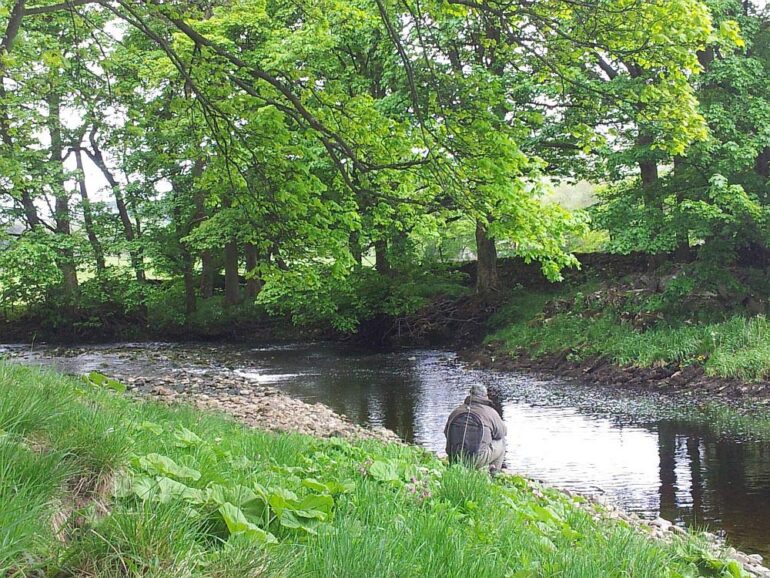
The Old Hatcheries
When the MAA took on the fishing waters at Horton they found that the fish stocks had been seriously depleted by the navvies who built the Settle to Carlisle railway. So they researched the latest practice in fish breeding and by 1884 had established a fish breeding house at Horton so that the depleted fish stocks in the river could be replenished with locally bred fish.
This first hatchery was situated on Douk Gill sometimes known as Horton beck and comprised a breeding house and a slate tank in which were kept the swim up fry prior to their placement in the spawning becks feeding the main river. Around 20,000 trout fry were hatched each year all carefully nurtured by Walker the Association’s first keeper.
By the turn of the century the Douk Gill facility was proving too small for the Association’s ambitions so in 1906 the operation was transferred a few hundred yards to Brants Gill where there is a constant flow of spring fed water and room to expand.
Here the hatchery quickly grew to comprise 5 stock ponds and 8 water fed ditches as well as a state of the art breeding house. The ditches were used for the breeding of shrimps and snails to supplement food stocks in the river and to grow water plants to improve river habitat. Fish could be allowed to grow on for two to three years in the ponds before being put into either the river or the Tarn.
The hatchery continued to produce high quality fish for 40 years but the days of unquestioned ideals were long gone and eventually it was concluded that a mortality rate which had crept up to around 90% at fry stage was no longer cost effective. So the last Horton bred fish were put into the river in 1946 and the hatchery closed.
They say that what goes around comes around and in 2005 the Association was approached by the Environment Agency’s local Fisheries Technical Officer with a proposal to enter into a partnership to reopen the long derelict ponds as a facility to breed and conserve native crayfish and once again to supplement the natural breeding of Ribble trout through the use of an offline spawning run and naturalised holding ponds.
A three way partnership agreement between the MAA, the land owners and the EA was signed and work was completed in July 2006 to return this historic site to a productive conservation facility.


